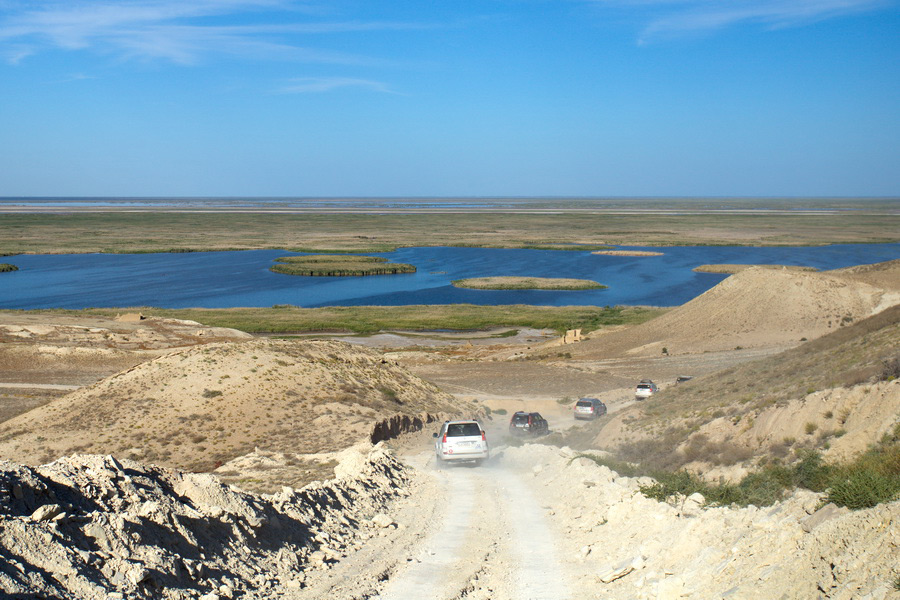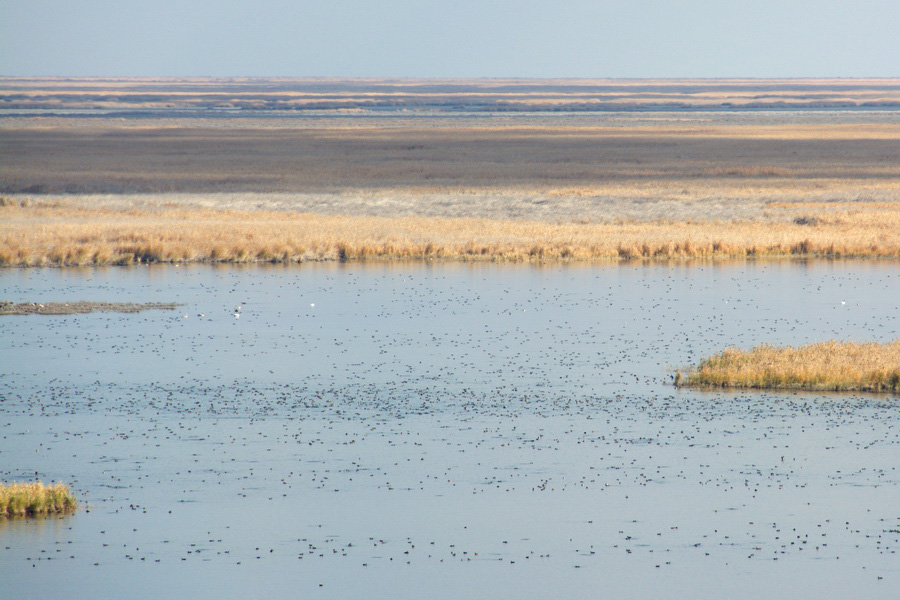Sudochie Lake, Aral Sea
 Sudochie Lake in summer
Sudochie Lake in summer
Historically, Sudochie Lake (also spelled as Sudochye) was the largest water body in the Amu Darya delta and was connected by a channel to the Aral Sea. Over the past 60 years, however, it has lost much of its volume and split into a series of smaller lakes. Despite these changes, Sudochie has managed to partially preserve its ecosystem. The lake still supports fish populations and serves as a resting spot for migratory birds, including nesting pink flamingos.
Sudochie Lake is quite shallow with a maximum depth of only 3 meters and an average depth of 1.5 meters. Originally, it spanned an area of 350 square kilometers, which has now decreased to 330. This area fluctuates with changes in water levels. Today, Sudochie Lake comprises four smaller lakes: Akushpa, Begdulla-Aydin, Karateren, and Bolshoe Sudochie. In summer, the water temperature ranges from 25-27 degrees Celsius, while in winter, the lake freezes over.
 Descent to Sudochie Lake near Cape Urga
Descent to Sudochie Lake near Cape Urga
The recorded history of Sudochie Lake is fairly recent, with significant events traced back only about 100 years. The name 'Sudochie' translates from Karakalpak as "fresh water." The area around the lake was first settled in the 9th century. The lake was mapped for the first time in 1849 by explorer A. Butakov during an Aral Sea expedition. By the late 19th century, the settlement of Urga had developed under the cape of the same name, where the ruins of a medieval lighthouse can still be seen today.
When the water levels in the Aral Sea began to drop in the 1960s, Sudochie Lake also saw a dramatic reduction in size—by 1972, its area had decreased to a quarter of its original size. However, it was later restored thanks to the redirection of drainage waters from the Amu Darya. In 1991, the area was designated as the "Sudochie" ornithological reserve. In 2008, it was recognized as an important ornithological area, and in 2023, it was added to the Ramsar Convention's list of protected wetlands.
 Fishing pier in the village of Urga
Fishing pier in the village of Urga
The "Sudochie" State Ornithological Reserve spans 50,000 hectares and aims to protect the diverse biological life in the Sudochie lakes system. It is home to 25 animal species and over 230 bird species, 15 of which are endangered and 20 listed in Uzbekistan's Red Book. The lake is frequented by pink flamingos, herons, pelicans, swans, golden eagles, ducks, and other bird species. In 2014, a significant population of pink flamingos was discovered here—7,000 birds were nesting on the lake!
 Thousands of birds on Sudochie Lake
Thousands of birds on Sudochie Lake
Sudochie Lake is inhabited by several fish species including carp, crucian carp, grass carp, and pike-perch. Historically, the lake produced 2,000 tons of fish annually, but today there is no commercial fishing, and only locals come here to fish. Previously, there was a fishing village called Urga on the western shore, where mainly Russian settlers lived.
 Lonely fisherman on Sudochie Lake
Lonely fisherman on Sudochie Lake
The village of Urga is located on the western shore beneath the cliff of the Ustyurt Plateau. It survived for nearly a century, with the last resident leaving in 1971. Today, remnants of a small Russian cemetery, several building foundations, ruins of a fish storage facility filled with tons of ice, and the walls of a small fish processing plant can still be seen. Occasionally, fishermen visit, and old boats navigate through the narrow channels deep into the lake. Tours to Sudochie Lake and the village of Urga are included in many programs for trips to the Aral Sea.
 Russian cemetery near the village of Urga
Russian cemetery near the village of Urga
Thanks to the efforts of international nature organizations and the authorities of Karakalpakstan, Sudochie Lake has been preserved as a vibrant oasis in the desert, unlike the Aral Sea.



